
,
Custom AI agent development is transforming the business world by automating a wide range of tasks, from customer service and data entry to complex analysis and report generation.
In a recent Capgemini survey based on 1,100 executives, it has been revealed that 10% of companies actually use AI agents. While 82%, plan to implement them in the next three years. Remarkably, 60% of them want to create AI agents in the space of twelve months. This is a clear indication of the growing curiosity of the community in this particular technology.
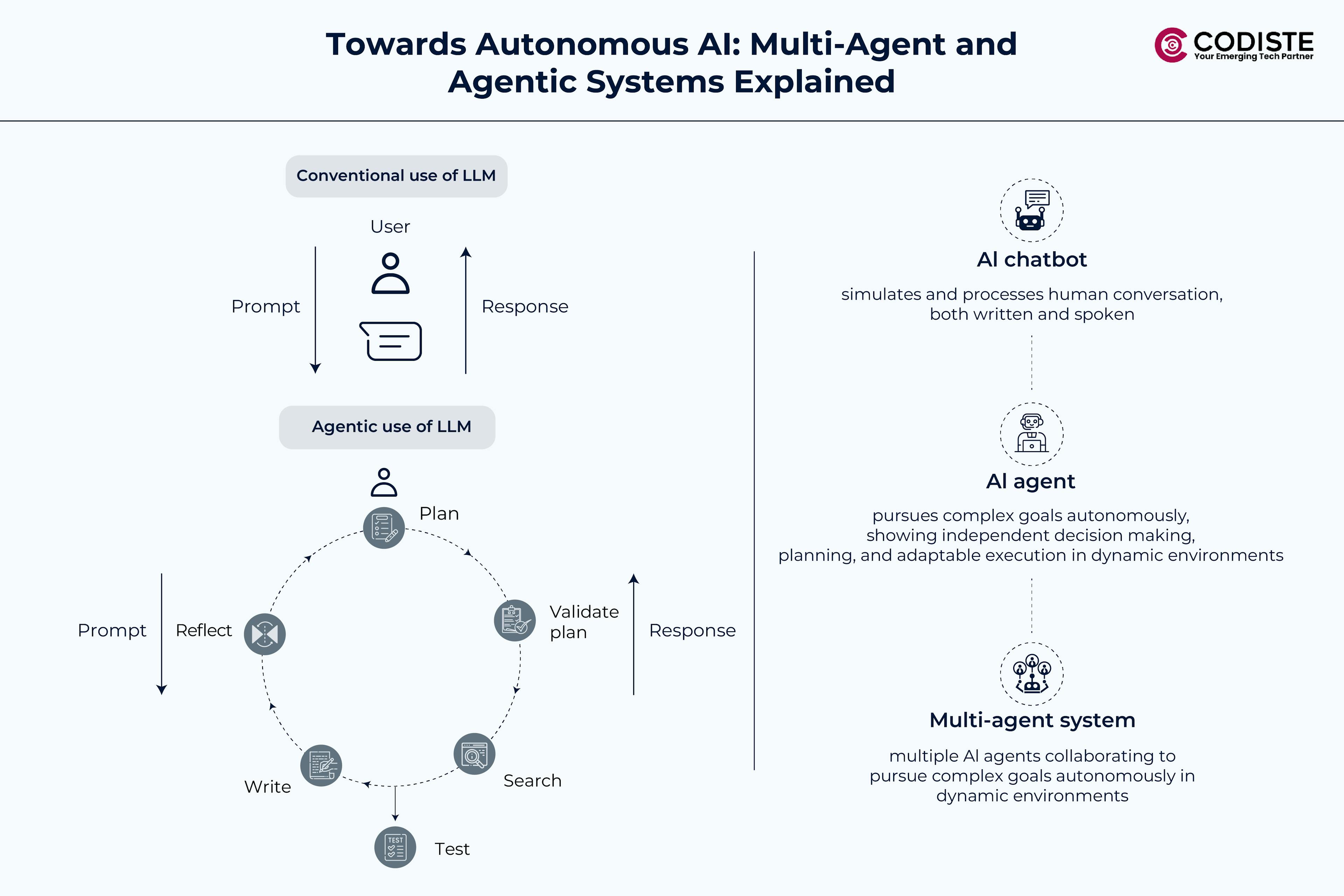
AI-Powered agents for industries are striving to keep pace with their competitors. They help to shorten the time frame of each of the tasks, thus reducing the costs. They also provide detailed, data-driven information for the best decision-making.
Are you thinking about introducing an AI agent? This guide would be of great help to you in this regard. To begin with, let us explain what an AI agent is and the numerous methods of building one.
What is an AI Agent?
An AI agent can be defined as a program or system that can operate independently to execute tasks on behalf of a user or another system. An AI agent can be autonomous in doing work, learning from data, and aiding with decisions.

AI agents are designed to perform a wide range of functions, such as:
- Sorting documents
- Analyzing customer interactions
- Generating insights from data
- Providing answers to inquiries
These systems are effective as they can handle tasks that are usually repetitive, providing a positive and memorable customer experience, as well as ensuring operational efficiencies.
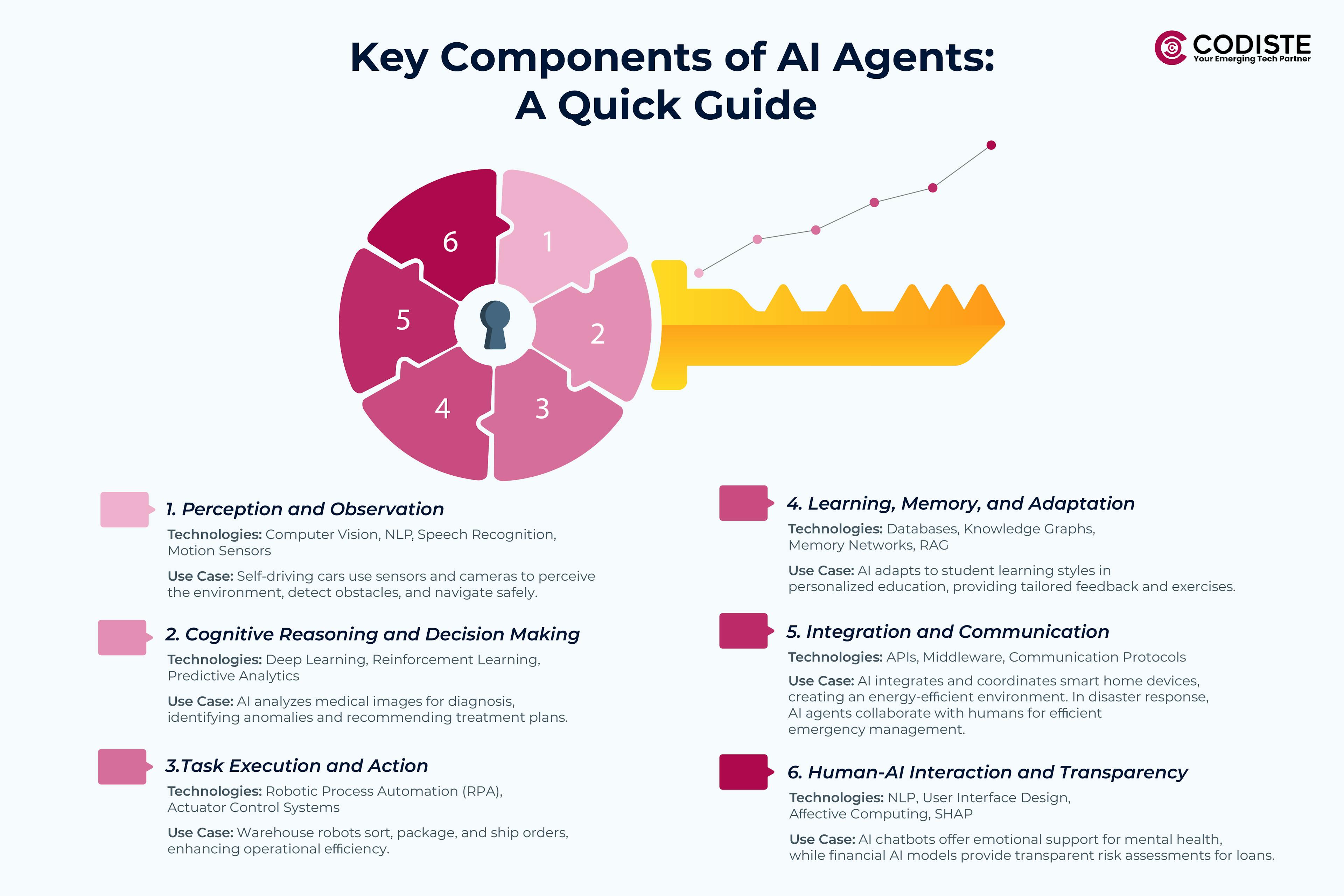
Two Different Approach for AI Agent Development
There are two main ways to develop an AI agent:
AI Agent Development from Scratch
Building an AI agent from the ground up is an appropriate way to serve corporations with one-of-a-kind AI that meets their specific business needs.
A good example can be a financial services company developing an AI agent that can identify fraudulent transactions. AI Agent automates fraud detection by combining their unique algorithms and datasets. However, this method consumes a lot of time and requires expertise and resources. Thus, every team has to be responsible for their task from data collection and model training to infrastructure setup. This may put a heavy burden on the team and the process itself may be complex and very time-consuming.
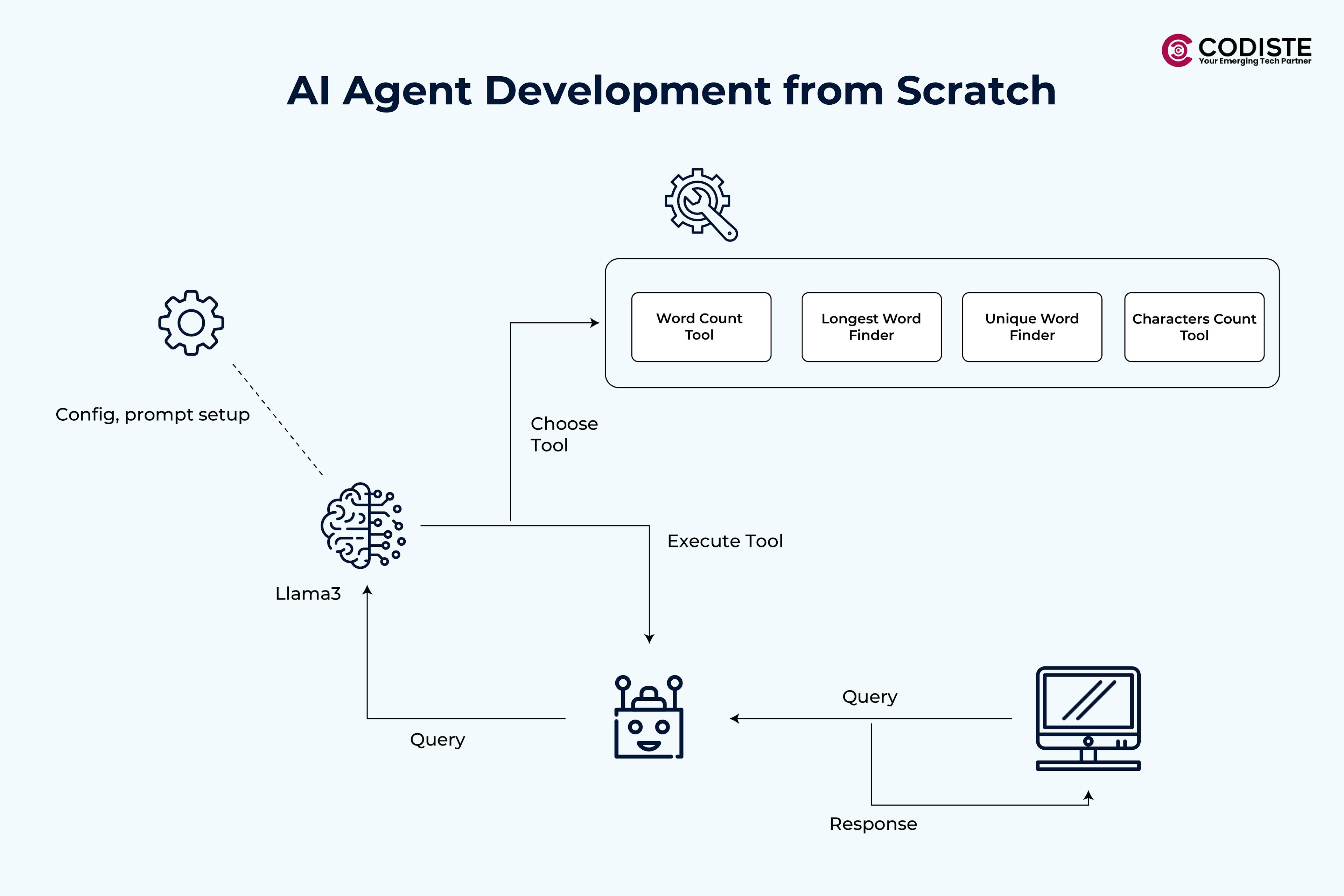
AI Agent Development Using Existing Frameworks
The use of premade frameworks speeds up and simplifies the task of AI agent development. Dialogflow, Rasa, and other platforms are rich in libraries, APIs, and pre-tuned models that help simplify the work. An e-commerce based company can use this tech to design a chatbot to support customer service. Businesses can save time and money in this process as they are using existing frameworks. This way of doing things is particularly good for such companies that lack technical knowledge and money.
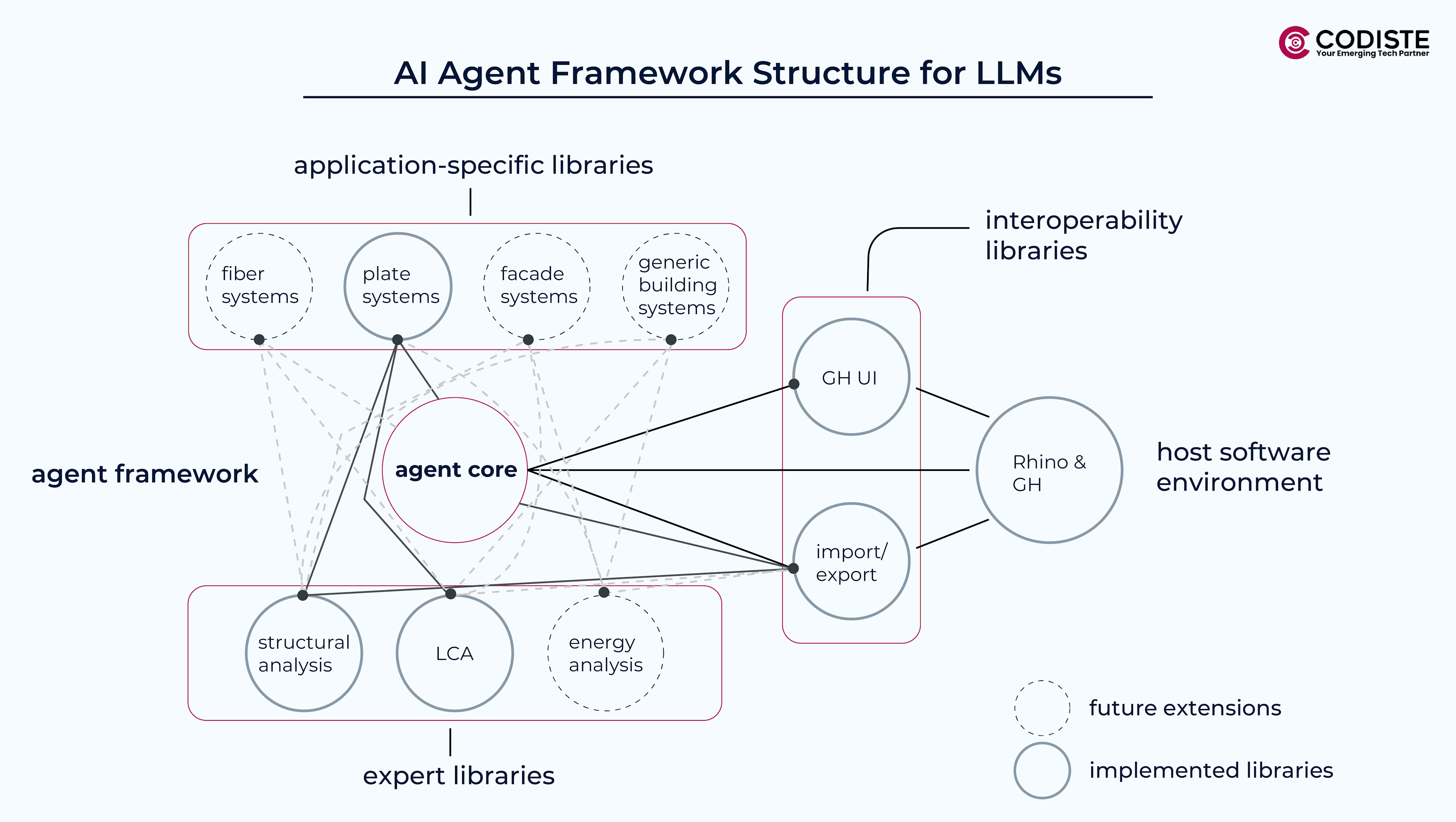
7 Easy Steps to Build an AI Agent from Scratch
An AI agent demands meticulous planning and execution. The following are the seven steps to walk you through the whole process:
Step 1: Define the Agent’s Purpose and Scope
To begin, it is important to explain what you want out of it and what it will not do. You can pose precise questions to prospective clients or stakeholders.
To develop an effective custom AI agents, consider the following:
- Agent Capabilities
What tasks will the agent perform? (e.g., sorting documents, analyzing interactions, responding to inquiries) - Desired Outcome
What goal should the agent achieve? (e.g., boosting efficiency, improving service, automating business processes) - Data Sources
What data will the agent utilize? (e.g., databases, emails, IoT data) - Autonomy Level
How much independent decision-making should the agent have? (e.g., autonomous or supervised) - Ethical and Regulatory Concerns
Are there any relevant standards or regulations to comply with?
Defining these parameters helps create a clear roadmap for development.
Read more:
Ultimate AI Agent Development Guide for Businesses in 2025
How Agentic AI Development is Powering Next-Gen SaaS Startups
Choosing Between Chatbots and AI Agents, What Does Your Business Need?
Step 2: Assemble Your Development Team
Building an AI agent requires a multidisciplinary team, including:
- Data Scientists
Data collection, processing, and analysis are managed by professionals. They are tasked with the creation and improvement of machine learning models that are at the heart of the AI agent. For instance, a data scientist can make a recommendation engine for an e-commerce platform. - AI Engineers
AI engineers concentrate on introducing AI models into the design of the agent. They combine APIs, adjust algorithms, and guarantee the scalability of the technology. For example, they could model the decision-making logic that is behind a virtual assistant. - Frontend and Backend Developers
Frontend developers are busy creating user interfaces that are simple and beautiful in their visual appearance. Whereas, backend developers are working on more secure and durable systems for data storage, processing, and interactions. They work together to ensure a hassle-free user experience and system operation. - Project Managers
Project managers are the people who coordinate tasks and maintain timelines. They cooperate with the team to make sure they achieve the project’s objectives. They help the development team and stakeholders to stay on the same page.
A well-balanced team makes the project continue as expected and successfully accomplish its objectives like self-driving cars or healthcare diagnostic tools.
Step 3: Gather, Clean, and Prepare Essential Data
Artificial intelligence works with high-quality data to be effective. The processing of the data includes these steps:
- Internal Data
Data from company databases, CRM systems, or operational records shall be gathered. Indeed, a retail company could get demand forecasting agents trained by using sales and inventory data. - External Data
Apply public datasets or third-party APIs. The AI which predicts weather will use meteorological data that come usually from national agencies. - User-Generated Data
Employ feedback, logs, or user interactions. Most of the time, social media platforms depend on user-generated data to personalize content recommendations.
Gather the data and then make it error-free and consistent. Apart from cleaning, do normalization, outlier detection, and data transformation to get it ready for training. Deficient data may cause non-precise models.
Step 4: Select the Right Technology and Tools
Choosing the correct technology stack for AI agent development is of utmost importance for the agent’s success. Here is how to approach it:
- Assess Requirements
The tasks, scale, and complexity of the agent should be defined. A chatbot for customer service, for example, will require natural language processing (NLP) capabilities, whereas a fraud detection system could need anomaly detection algorithms. - Evaluate AI Technologies
Discover and compare the frameworks and tools that a cloud platform like AWS, Azure, or Google Cloud provides having regard to their capabilities and community support. - Consider Deployment Options
Choose among the cloud platforms such as AWS, Azure, or Google Cloud for cost and scalability in reach, or choose on-premises solutions for more control. - Evaluate Development ToolsEmploy Python libraries like NumPy, Pandas, Scikit-learn for data processing, and REST APIs to connect the components seamlessly.
For example, the development of an AI-powered search engine could use Elasticsearch for indexing, TensorFlow for ranking algorithms, and AWS for hosting.
Step 5: Design the AI Agent
Agent design is the process of creating a proper and efficient structure.
- Modular Design
The agent should be separated into isolating parts, each performing a different function. It should be noted that a personalized AI-based customer service agent may be divided into the following sections: NLP, user intent detection, as well as response generation. By adhering to this development strategy, a highly flexible and scalable environment is achieved. - Concurrent Design
Plan that all parts communicate with each other at the same time since it is a must for real-time applications such as autonomous vehicles or trading systems.
In general, this is the interaction process of the agent with users, and the interfacing to other systems is defined. Use flowcharts or wireframes to visualize the interactions and reveal the bottlenecks to be addressed.
Step 6: Develop and Test the AI Agent
The custom AI Agent development phase involves:
Implementing Core Features
Integrating of APIs, writing of algorithms, and creating databases. For example, building a chatbot needs to include the integration of an NLP engine, and the writing of a conversational flow, which will connect to a knowledge base.
Testing and Debugging: Conduct various testing stages:
- Unit Testing
Doing the unit testing means verifying that specific components are working properly. The NLP parser accuracy check can be also applied as an example of the unit testing paradigm. - Integration Testing
For instance, the NLP engine and database must be compatible for testing the correctness of the system. - Performance Testing
Telling how a system or program performs under different conditions will be tested under a given system execution schedule including a kind of performance test named speed, reliability, and scalability
The use of iterative testing identifies issues and resolves them at the outset, thus avoiding any post-deployment errors.
Step 7: Deploy and Monitor the AI Agent
A milestone is reached when a deployment task is completed. Observe the below-mentioned sequence:
- Monitoring Performance
Employing software tools like Grafana or Datadog prevents service-related anomalies from occurring, for example, response rate and precision percentage. - Regular Updates
Develop the virtual assistant by setting up customizable AI Agent features, renewing training datasets, and adjusting algorithms to work more efficiently. As one example, a virtual assistant regularly needs adjustments to the system to tackle different types of user questions.
Proper monitoring and deploying AI Agents for businesses ensures the agent adapts to the changing needs and maintains its stable supply, as clearly demonstrated by applications such as personalized learning platforms or dynamic pricing systems.
An Insight on Our Recent AI Agent Development Project
Zo.me is an AI-powered group chat application developed by Codiste to transform how users interact and collaborate. By integrating AI models and customizable features, Zo.me empowers individuals and teams to create tailored communication experiences that meet diverse needs.
One of the primary challenges in group communication is the lack of personalization and advanced AI capabilities. Zo.me addresses this by offering customizable agents—ranging from application and communication agents to character agents. These agents can be tailored to streamline workflows and enhance collaboration, whether for personal or professional use.
The platform’s technological backbone is robust and innovative. Built using React.js, Next.js, and Python, and deployed on Azure Cloud and AWS, Zo.me ensures scalability, reliability, and security. Its integration with the decentralized Matrix.org protocol further enhances secure communication. At the heart of Zo.me is Zai, a personalized AI assistant powered by leading LLMs such as OpenAI and Gemini, delivering tailored responses and insights to users.
Zo.me stands out by enabling users to leverage AI mini apps for creating utility agents, social agents, and more. By offering unparalleled customization and robust infrastructure, Zo.me redefines group communication and showcases Codiste’s expertise in AI-driven solutions. This transformative app is a testament to how AI can bridge the gap between innovation and practical utility in communication.
Let’s Conclude
Launching Custom AI Solutions might seem complex, but by following these seven steps, you can streamline the AI agent development process. Each step of building AI Agents from scratch plays a vital role in creating an efficient and effective solution, right from defining agent’s purpose to deploying and monitoring.
Through problem-solving and using the right tools, an AI agent is capable of driving upgrades such as automation, efficiency, and decision-making. So, if you want to build an AI Agent for Enterprise Workflows or have a unique AI agent development idea to discuss, connect with Codiste, an AI development company.
Start your journey today and redefine what’s possible with AI.



Top Industries Benefiting from AI Voice Assistants in Customer Service
Know more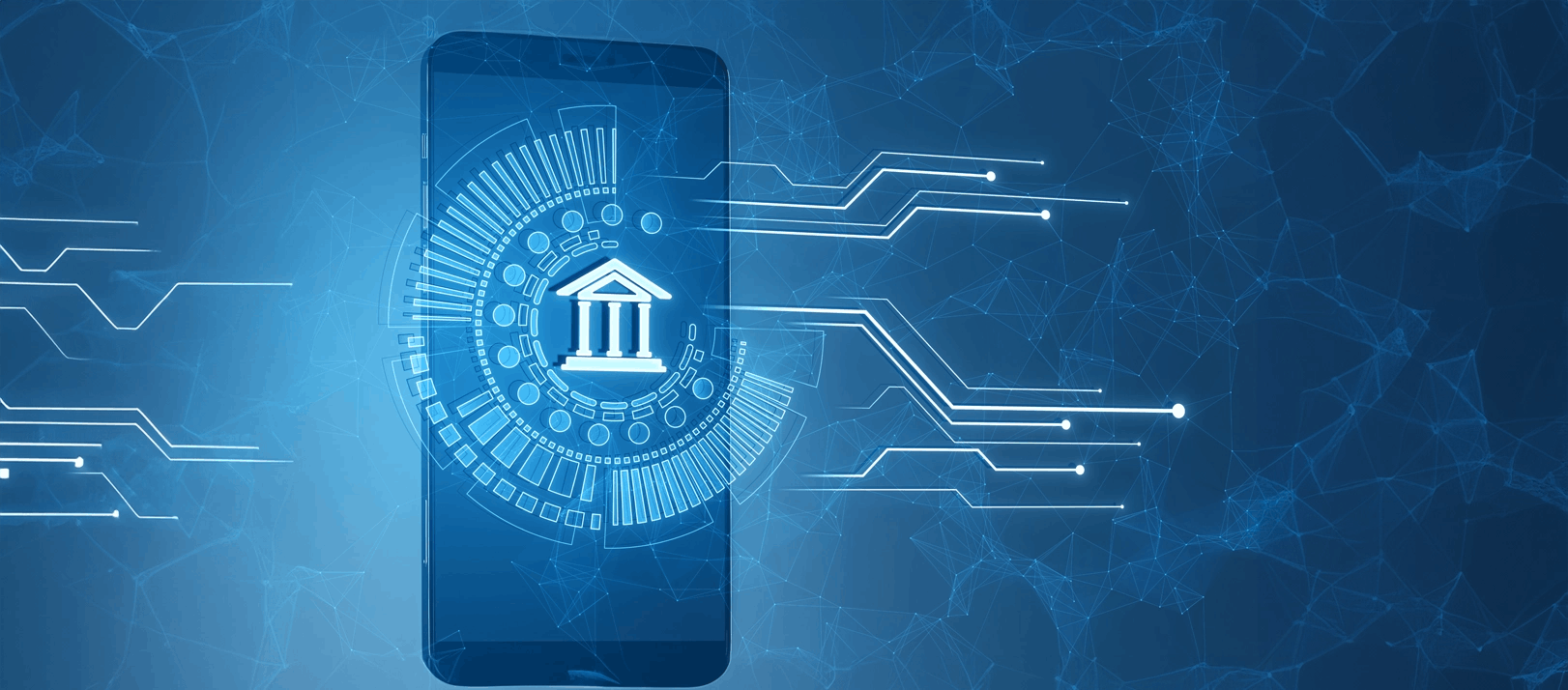
Building a Compliance-First Neobank: Tech Stack, AI Models, and Regulatory Architecture
Know more
